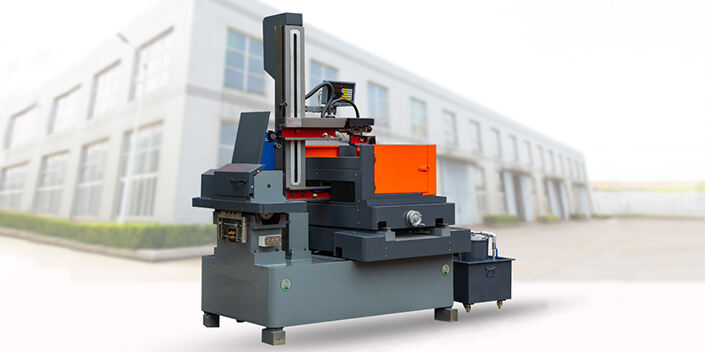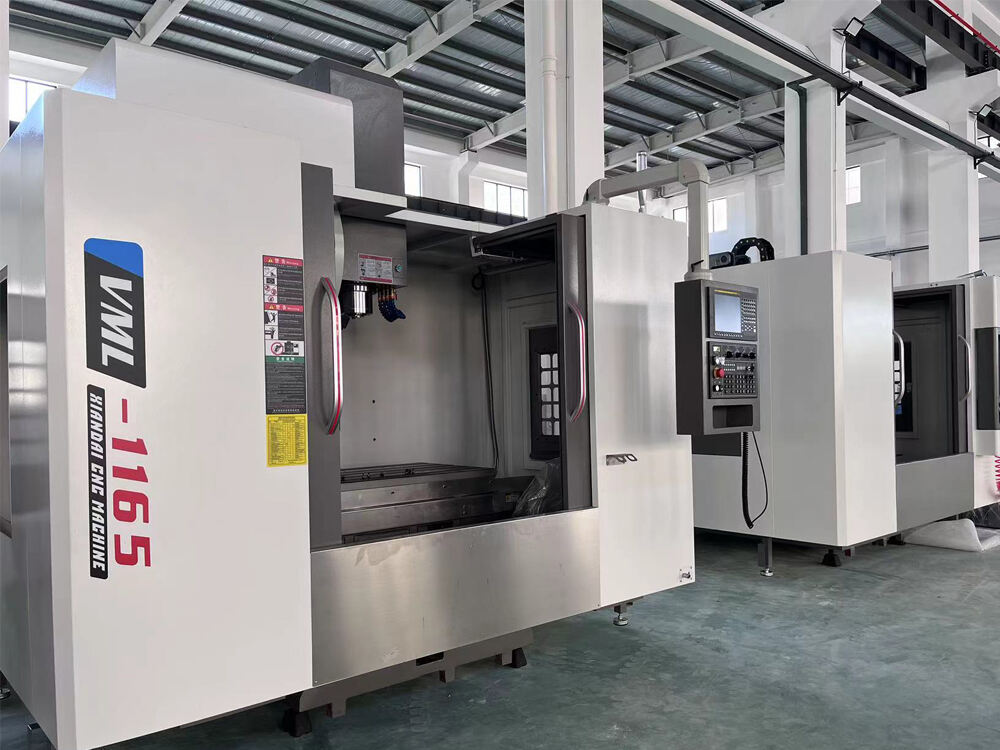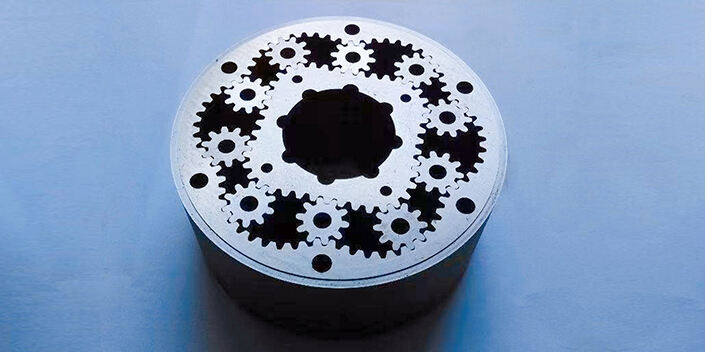Розуміння механіки електроерозійного свердлення для малих отворів
Принципи електроерозійної обробки
EDM працює через щось дійсно цікаве — вона використовує мікриські електричні іскри, щоб поступово зносити матеріал. Що відбувається насправді: діелектрична рідина іонізується, створюючи шляхи для електрики, щоб перестрибувати між ріжучим інструментом і тим, над чим ми працюємо, що дозволяє нам видаляти матеріал дуже точно. Цей метод справді виглядає ефективно при роботі з металами, які добре проводять електрику, і особливо тоді, коли фігури стають складними або детальними. Ми бачимо цю технологію всюди — у виробництві літаків та виробництві медичних пристроїв, тому що саме там надзвичайно важливо досягти максимально точної обробки. Можливість точно контролювати, скільки матеріалу буде видалено, означає, що виробники можуть створювати надзвичайно складні деталі, практично не втрачаючи вихідний матеріал.
Критичні різниці між ЕДМ та традиційним свердленням
Те, що відрізняє електроерозійне свердління від традиційних методів свердління, полягає в тому, що воно використовує тепло замість фізичного зусилля для різання матеріалів. Саме ця принципова різниця дозволяє EDM ефективно справлятися з дуже твердими речовинами без особливих зусиль — те, що звичайні свердла не можуть зробити в багатьох випадках. Справжня перевага проявляється під час роботи з витонченими дизайнами або необхідністю отримати надзвичайно гладьку поверхню. Підприємства, що використовують EDM, часто відзначають, що витрачають менше часу на додаткову обробку деталей після механічної обробки, адже процес вже забезпечує точність, максимально наближену до фінальних технічних характеристик. Механічні свердла мають певні обмеження під час роботи з деякими металами, тим тим EDM забезпечує високу точність без додаткового навантаження на матеріал, що обробляється. Це робить його практично незамінним для завдань, які вимагають екстремальної точності в різних галузях виробництва.
Роль електродних матеріалів у якості отворів
Коли мова йде про якість отворів EDM, вибір електрода має вирішальне значення, адже він суттєво впливає на гладкість поверхні та точність дотримання розмірів. Різні матеріали мають свої переваги щодо електропровідності та стійкості до зносу з часом. Мідь чудово проводить електрику, але швидше зношується порівняно з іншими варіантами. Графіт набагато краще витримує знос, що означає довше життя електрода між замінами. Це важливо, адже неправильний вибір матеріалу може призводити до збільшення витрат через більш високі рахунки за енергію та частіші заміни компонентів. Правильний вибір забезпечує стабільні результати від партії до партії, що є критичним для виробників, які не можуть дозволити собі постійні регулювання в середині виробничого процесу.
Ключові фактори, що впливають на ефективність пробивання EDM
Діаметр електроду та управління зносом
Розмір електрода має досить велике значення, коли мова йде про те, наскільки точним і ефективним буде фрезерування методом електроерозії. Використання меншого електрода дійсно підвищує точність, хоча і є певний компроміс, адже такі електроди швидше зношуються. Тому дуже важливі правильні методи управління, якщо ми хочемо, щоб усе працювало стабільно протягом тривалого часу. Стеження за тим, як зношується електрод, допомагає точно налаштувати операції, що в кінцевому підсумку забезпечує більш тривалий термін служби інструментів і кращу якість отриманих отворів. Дослідження показують, що правильне ставлення до проблем зношування може реально подовжити термін служби електрода приблизно на 30 відсотків. Для підприємств, що прагнуть оптимізувати витрати, таке поліпшення перетворюється на реальний приріст обсягів виробництва та скорочення витрат на заміну інструментів.
Тиск діелектричної рідини та методи промивання
Правильний тиск діелектричної рідини має велике значення для ефективності промивання та видалення стружки під час операцій електроерозійної обробки. Нові підходи до процесу промивання допомагають зменшити накопичення тепла, що знижує ризик пошкодження оброблюваних деталей і зберігає цілісність отворів. Якщо виробники дотримуються стандартних рекомендацій і правильно налаштовують тиск рідини, вони часто досягають загального підвищення ефективності приблизно на 20%. Результати, отримані на виробничих майданчиках, також переконливо підтверджують це. Кращий контроль тиску означає менше бракованих виробів і більш гладкі виробничі процеси — чого прагне кожен виробник, не витрачаючи зайвого на модернізацію обладнання або витрати на обслуговування.
Оптимізація тривалості імпульсу та параметрів струму
Налаштування тривалості кожного імпульсу суттєво впливає на кількість енергії, що передається оброблюваній заготовці, а також на швидкість видалення матеріалу під час обробки. Як правило, коротші імпульси забезпечують вищу точність обробки та кращий зовнішній вигляд отворів після свердління. У той же час, налаштування струму мають не менше значення, адже вони впливають на швидкість ерозії матеріалу та якість обробленої поверхні. Правильний вибір цих параметрів суттєво підвищує ефективність свердління. Дослідження показали, що коли виробники правильно налаштовують тривалість імпульсів та рівень струму, продуктивність електроерозійного свердління може покращитися більш ніж на 25% у багатьох випадках. Для підприємств, що виготовляють високоточні деталі, де важливий кожен параметр, точне налаштування цих показників є абсолютно необхідним для досягнення виробничих цілей без погіршення стандартів якості.
Сучасні Техніки для Точності та Швидкості
Інтеграція CNC для Забезпечення Послідовності При Свердленні Багатьох Отворів
При інтеграції технології ЧПК з процесами електроерозійної обробки спостерігається підвищення точності та ефективності, що має велике значення для свердління кількох отворів з постійністю. Автоматизація забезпечує виконання кожного отвору з точною відповідністю заданим параметрам, скорочуючи ті неприємні помилки та невідповідності, які властиві традиційним методам. Сучасне виробництво стає все більш складним, і такі системи забезпечують потребу у точних вимірах для багатьох деталей одночасно. Дослідження показують, що підприємства, які використовують електроерозійні верстати з ЧПК, здатні скоротити тривалість циклів приблизно на 40% порівняно зі старими системами. Це означає прискорення виробництва з одночасним збереженням високих стандартів якості та точності, які очікують клієнти.
Виявлення проривів для запобігання ударів у тилову стіну
Системи виявлення прориву мають ключове значення для захисту як оброблюваної деталі, так і інструменту під час виконання процесів електроерозійної обробки. Ці системи використовують сенсори для виявлення моменту прориву, щоб запобігти неприємним ударам у задню стінку до того, як вони спричинять дороге пошкодження. Якщо оператори отримують миттєвий зворотний зв’язок від цих систем, вони можуть оперативно коригувати параметри обробки, що робить весь процес безпечнішим. За даними останніх досліджень, проведених на різних виробничих підприємствах, впровадження таких технологій виявлення скорочує кількість бракованих деталей приблизно на 15% або більше. Таке поліпшення означає менше відходів продукції та нижчі загальні витрати для виробників, які інвестують у цю технологію.
Високотискове спливання для видалення шматків
Промивання під високим тиском суттєво підвищує ефективність видалення домішок з оброблюваних деталей, що є критичним для збереження гладкості поверхонь та правильного функціонування обладнання під час процесів електроерозійної обробки. Після встановлення таких систем високого тиску виробники помічають, що металеві стружки та інші небажані матеріали видаляються значно швидше. Це допомагає уникнути утворення небажаних шарів перекристалізації, забезпечуючи кращу якість поверхні та точність розмірів. Дослідження галузі показують, що завдяки цьому методу швидкість обробки може збільшитися приблизно на 30%, що пояснює чому все більше виробничих підприємств впроваджують цю технологію для прискорення робіт без втрати якості. Для тих, хто займається виготовленням деталей, де якість поверхні має критичне значення, наприклад, для авіаційних компонентів або медичних пристроїв, промивання під високим тиском сьогодні стало майже стандартною практикою.
Стратегії обслуговування для тривалої продуктивності
Регулярна заміна провідників електродів
Заміна електродних направляючих у встановлений термін допомагає підтримувати високий рівень продуктивності та запобігає тим неприємним втратам точності, які відбуваються з плином часу. Коли машини інтенсивно використовуються в завбільшених операціях, направляючі просто швидше зношуються, ніж очікувалося, тому наявність дієвого плану технічного обслуговування стає дуже важливою. Компанії, які дотримуються регулярних графіків заміни, як правило, функціонують ефективніше в цілому. Деякі показники галузі демонструють приблизно двадцятипроцентне підвищення ефективності для підприємств, які послідовно дотримуються цієї практики. Цілком логічно – правильне технічне обслуговування забезпечує надійне функціонування усього обладнання без тих раптових поломок, які з'їдають час виробництва.
Моніторинг чистоти діелектричної рідини
Підтримання чистоти діелектричної рідини має велике значення, адже бруд і домішки серйозно впливають на ефективність роботи машин. Регулярні перевірки та фільтрація забезпечують безперебійну роботу обладнання. Чиста рідина забезпечує краще проходження електрики через систему, а компоненти довше зберігають працездатність і менше зношуються. Дані галузі показують, що підприємства, які підтримують чистоту діелектричної рідини, економлять кошти на виправленні помилок і викиданні бракованих деталей — у деяких випадках економія досягає 15%. Для виробників, які звертають увагу на показники рентабельності, інвестиції в надійні системи моніторингу мають сенс як для прискорення виробництва, так і для зменшення витрат у довгостроковій перспективі.
Калібрування вирівнювання осей для прямих отворів
Правильна калібрування осей верстата має ключове значення для точного та прямого свердління та зменшення похибок обробки. Якщо оператори регулярно перевіряють параметри та вносять необхідні корективи, це значно зменшує неприємні відхилення у розмірах і формах отворів, які часто трапляються в багатьох виробничих процесах. За даними досвіду виробничих цехів у різних галузях, правильна установка осей зазвичай підвищує точність отворів приблизно на 10 відсотків. Для тих, хто працює з системами електроерозійного свердління, збереження такого рівня точності — це не просто добре практика, а справа економічної доцільності. Адже мета всього процесу — досягати стабільних результатів від партії до партії, уникаючи бракування деталей через проблеми з вирівнюванням.
Реальні застосування та ефективні метрики
Отвори для охолодження лопаток авіаційних турбин
Електроерозійна обробка відіграє дуже важливу роль у виробництві авіаційних двигунів, особливо коли мова йде про створення мікроскопічних охолоджувальних отворів у лопатках турбін. Ми говоримо про деталі, які піддаються екстремальному нагріву та тиску, коли двигуни працюють на повну потужність. Навіть найменша помилка у виготовленні цих лопаток може порушити ефективність роботи всього двигуна, саме тому електроерозійна обробка стала одним із найпопулярніших методів серед багатьох виробників. Результати реальних випробувань показали, що використання технологій електроерозійної обробки дійсно підвищує ефективність охолодження приблизно на 25%, що з часом має велике значення. Краще охолодження означає, що двигуни працюють рівномірніше та довше, не потребуючи заміни, що економить кошти та зменшує знос інших компонентів двигуна.
Мікроканали для медичних пристроїв
Електроерозійна обробка відіграє важливу роль у створенні мініатюрних каналів для рідин, необхідних у різних галузях медицини. Ці мікрофлюїдні шляхи дозволяють лікарям точно контролювати рідини всередині різноманітного медичного обладнання. Цікаво, що ця технологія допомагає зменшити розміри медичних приладів, водночас забезпечуючи їх більш ефективну роботу, ніж будь-коли раніше. Те, що EDM може виточувати такі детальні та точні форми, означає, що виробники більше не можуть обходитися без цієї технології під час виготовлення медичних інструментів. Згідно з останніми дослідженнями, канали, виготовлені за допомогою EDM, значно перевершують традиційні методи за точністю та ефективністю. А враховуючи, що багато медичних процедур залежить від точних вимірювань, такий рівень точності має велике значення в реальних ситуаціях, де вирішується питання про життя і смерть.
Дослідження виробництва сопел паливних ін'єкторів
Сопла паливних інжекторів відіграють ключову роль у забезпеченні якісної атомізації палива та підтриманні стабільної роботи двигунів, що робить їх однією з тих областей, де технологія електроерозійної обробки (EDM) справді виражається. Цінність технології EDM забезпечується її здатністю досягати максимальної точності, що допомагає виробникам дотримуватися як екологічних стандартів, так і показників продуктивності на загал. Дослідження в галузі показали, що використання технології EDM під час виготовлення таких інжекторів зазвичай призводить до підвищення ефективності використання палива приблизно на 15 відсотків. Такий рівень поліпшення є надзвичайно важливим у сучасних умовах, особливо на тлі посилення вимог до викидів, коли водії все одно очікують від своїх автомобілів високих експлуатаційних характеристик. Крім того, завдяки зменшенню відмінностей між окремими деталями, технологія EDM забезпечує стабільно високу якість протягом усіх виробничих циклів. Це має надзвичайне значення для автовиробників, які стикаються зі зростаючою складністю технічних характеристик, що вимагаються споживачами, які прагнуть до більшої економії палива й екологічно чистіших двигунів.





